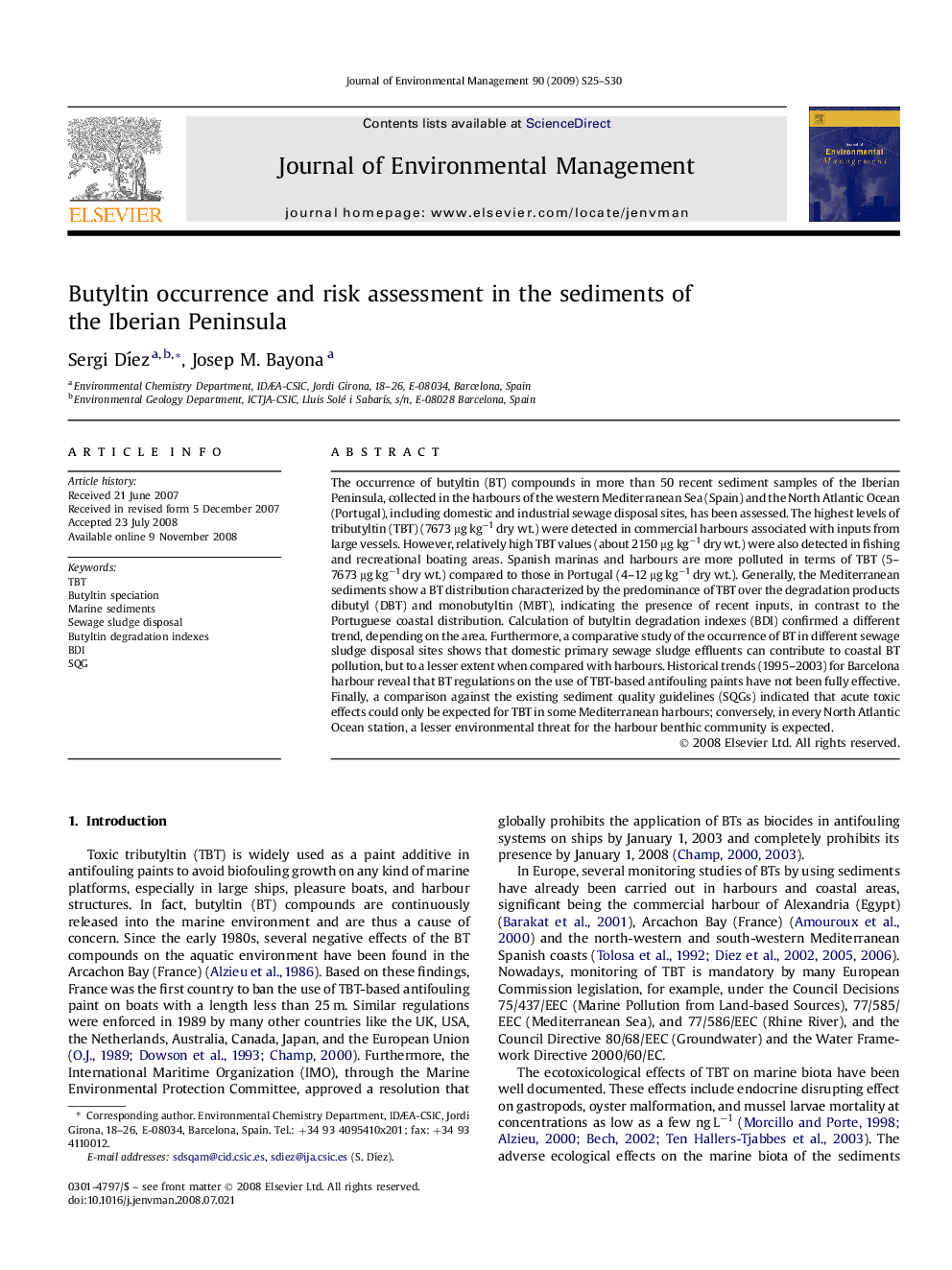| Article ID | Journal | Published Year | Pages | File Type |
|---|---|---|---|---|
| 1058537 | Journal of Environmental Management | 2009 | 6 Pages |
The occurrence of butyltin (BT) compounds in more than 50 recent sediment samples of the Iberian Peninsula, collected in the harbours of the western Mediterranean Sea (Spain) and the North Atlantic Ocean (Portugal), including domestic and industrial sewage disposal sites, has been assessed. The highest levels of tributyltin (TBT) (7673 μg kg−1 dry wt.) were detected in commercial harbours associated with inputs from large vessels. However, relatively high TBT values (about 2150 μg kg−1 dry wt.) were also detected in fishing and recreational boating areas. Spanish marinas and harbours are more polluted in terms of TBT (5–7673 μg kg−1 dry wt.) compared to those in Portugal (4–12 μg kg−1 dry wt.). Generally, the Mediterranean sediments show a BT distribution characterized by the predominance of TBT over the degradation products dibutyl (DBT) and monobutyltin (MBT), indicating the presence of recent inputs, in contrast to the Portuguese coastal distribution. Calculation of butyltin degradation indexes (BDI) confirmed a different trend, depending on the area. Furthermore, a comparative study of the occurrence of BT in different sewage sludge disposal sites shows that domestic primary sewage sludge effluents can contribute to coastal BT pollution, but to a lesser extent when compared with harbours. Historical trends (1995–2003) for Barcelona harbour reveal that BT regulations on the use of TBT-based antifouling paints have not been fully effective. Finally, a comparison against the existing sediment quality guidelines (SQGs) indicated that acute toxic effects could only be expected for TBT in some Mediterranean harbours; conversely, in every North Atlantic Ocean station, a lesser environmental threat for the harbour benthic community is expected.
